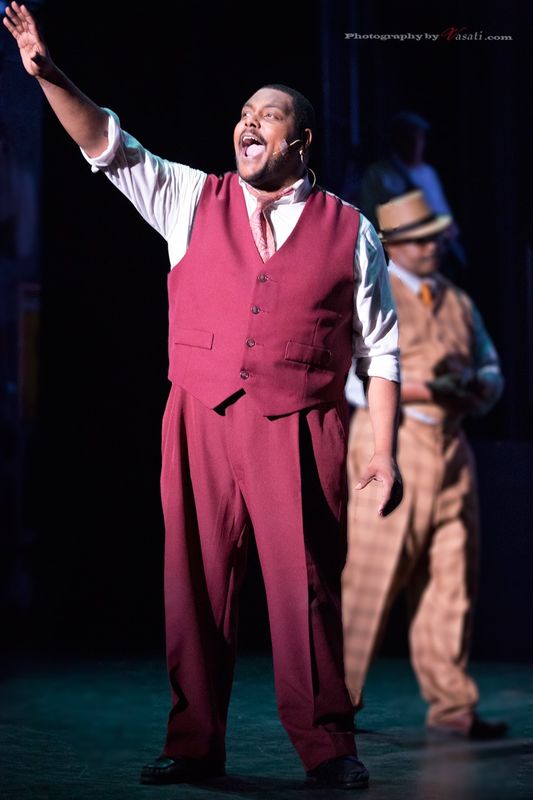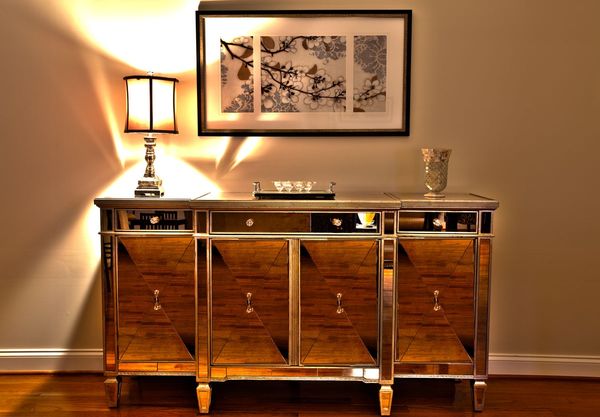Shutterstock
Dec 4, 2012 10:13:35 #
I submit to Shutterstock and other stock agencies; before submitting take a look at your images in Photoshop, Lightroom etc at 100%; if not tack sharp toss 'em you are wasting your time. Excessive post processing; poor lighting and composition (very often debatable in my opinion but I've found it also a waste of time to squabble) are also killers. Good luck, trust me it takes an iron will and a humble outlook to make it worthwhile. The rewards are great however I have a friend who is making $1000 + per month after only 3 years submissions. Some make that much per day believe it or not...over and out Chuckr
Dec 4, 2012 10:16:11 #
Gtole wrote:
Here are some of the shots Shutterstock said were out of focus
The quality of the lens notwithstanding and other issues mentioned previously, specifically, what I'm seeing is that the foliage in front of the first one seems oof and around the nose area of the two animals are both oof, the blunt end of the ape's nose, and the entire snout of the lemur(?), perhaps more a dof issue than focus - or perhaps a phenom of the uploading to uhh. Maybe too much effort to keep iso down and too little effort to hit the lens "sweet spot." That 5D3 will allow a lot more iso than 100 and give you more latitude with aperture for dof.
Dec 4, 2012 10:17:38 #
Also, shooting at ISO 100 may also be part of the issue. Shooting at 100, 50 or below can cause an image to soften. Cameras are designed to be used at ISO 200 as standard.
You may find that they did just return the photos and use focus as a broad brush excuse. Stock photography is quite difficult to get into, you really have to tailor the images you offer to their specific needs. They employ an army of trend experts who work out what images the stock library needs at a given time. Be sure to keep on top of their needs! I looked at it once and got told that they were only after corporate type photos of individuals or groups. That throws up all sorts of issues, model releases, limited scope etc. So I Hun up my stock dreams there and then and settled on my real loves within photography.
You may find that they did just return the photos and use focus as a broad brush excuse. Stock photography is quite difficult to get into, you really have to tailor the images you offer to their specific needs. They employ an army of trend experts who work out what images the stock library needs at a given time. Be sure to keep on top of their needs! I looked at it once and got told that they were only after corporate type photos of individuals or groups. That throws up all sorts of issues, model releases, limited scope etc. So I Hun up my stock dreams there and then and settled on my real loves within photography.
Dec 4, 2012 10:30:49 #
PeteWilliams wrote:
Also, shooting at ISO 100 may also be part of the ... (show quote)
At ISO 100 images start to soften? Never heard of that one.
I assure you on his camera the 5dmkiii the best quality images will be at ISO 100, provided that you have enough light. If I can get 1/125 shutter from my 70-200-2.8L at f2.8-f8. I will shoot at ISO 100 every time.
I use the 5dmkiii.
Dec 4, 2012 10:37:54 #
IMHO: Please dont be offended but in your situation I would appreciate an honest opinion .so here goes. Shots 1&3 are just snaps they wouldn't be keepers for me..Shot 2 Gorilla..Could be acceptable on its content e.g. expressive. I too have downloaded and looked at the images in detail and they fall far short of my L lenses. Apart from this there are many other variables to take into consideration, some mentioned above..regards :)
Dec 4, 2012 10:38:07 #
One other note.
One of the best places to determine what makes a good stock image are magazines.
One of the best places to determine what makes a good stock image are magazines.
Dec 4, 2012 11:03:35 #
Again Thanks for all the comments. I have always tried shooting at the lowest possible ISO because of noise issues when you get higher (on some cameras) I usually start there, and if the light isnt correct then I start cranking it higher. Is this wrong? should I opt to set aperture and shutter setting before ISO?
My way of looking at it has always been Light (ISO) then Shutter speed then DOF (aperture) Unless Im shooting sports then I go with shutter speed first. is this wrong as a general rule of thumb? The 5dMKIII is very new to me and it has a big learning curve compared to my old T3I so all your comments are very helpful.
My way of looking at it has always been Light (ISO) then Shutter speed then DOF (aperture) Unless Im shooting sports then I go with shutter speed first. is this wrong as a general rule of thumb? The 5dMKIII is very new to me and it has a big learning curve compared to my old T3I so all your comments are very helpful.
Dec 4, 2012 11:10:53 #
silver
Loc: Santa Monica Ca.
Gtole wrote:
Hi all,
Has anyone been successful being accepted at Shutterstock. I placed what I thought were very good stock (type) photos and many of them were rejected saying out of focus. They are perfectly clear and sharp. So I'm wondering if anyone might have some tips.
Thanks
Gary
Has anyone been successful being accepted at Shutterstock. I placed what I thought were very good stock (type) photos and many of them were rejected saying out of focus. They are perfectly clear and sharp. So I'm wondering if anyone might have some tips.
Thanks
Gary
This is an excuse when a stock company doesnt want to tell people that there images are not up to there standards.
Dec 4, 2012 11:19:19 #
Gtole wrote:
Again Thanks for all the comments. I have always t... (show quote)
Your right on keeping your miso as low as possible.
I shoot mainly AV and let my shutter float. I try to keep my shutter at 1/125.
If you use a tripod your shots will be sharper(if its a good one). Shutter is irrelevant with a tripod on still life. Just shoot for depth of field.
The mkiii is one of the best cameras available at high ISO. However for stock photography I wouldn't go above 200. You need to do that for stock. The stock companies expect the shots to have no noise.
Here's an example shot at ISO 6400 on the mKiii. It is not a stock photo candidate. Although the image is a nice image the depth of field was too low.
Look at the mans left hand and you can see the problem.
Image two would,be a good stock candidate. Tack sharp at ISO 100.
Picture thee is a good stock candidate after it is fixed in post. This is the slightly warped version. Due to an imperfect perspective and barrel distortion.
High ISO not a good stock candidate

Good stock candidate.

Perspective with barrel distortion problem.

Dec 4, 2012 11:29:59 #
The quality of the high ISO(and focus points) on the MKIII was one of the main reasons I bought the camera. It is amazing as your shot points out. I saw the second shot one your site and loved it and how sharp it is. Now when you say barrel distortion what am I looking for because I dont see anything out of the ordinary.
I hope you dont mind but I will probably be hiting you up for more hints about this camera. I love it but it truly is another realm for me.
I hope you dont mind but I will probably be hiting you up for more hints about this camera. I love it but it truly is another realm for me.
Dec 4, 2012 11:52:41 #
Gtole wrote:
The quality of the high ISO(and focus points) on the MKIII was one of the main reasons I bought the camera. It is amazing as your shot points out. I saw the second shot one your site and loved it and how sharp it is. Now when you say barrel distortion what am I looking for because I dont see anything out of the ordinary.
I hope you dont mind but I will probably be hiting you up for more hints about this camera. I love it but it truly is another realm for me.
I hope you dont mind but I will probably be hiting you up for more hints about this camera. I love it but it truly is another realm for me.
Look at picture three again.
Notice that the top of the picture in the frame is even and perfectly parallel to the edge of the picture.
Now go to the bottom of the picture and look at the feet of the furniture.
They're not even with the bottom of the frame.
A stock company would pick up on this.
Shooting for symmetry seeing symmetry or making symmetry takes practice.
One of my perfectly symmetrical images.
Notice no reflection in the mirror. Golden overtones would probably make a good stock image. A good compositor could add a reflection.
This one is not on my site. Doesn't fit with my portfolio.
Also notice the tripod legs reflected in the drawers on the pick below.
Symmetry

Dec 4, 2012 12:22:08 #
Looking at your downloaded pictures, they partially are in sharp focus, so the lens does not appear to me to be a problem. In both the animal pictures, left shoulder in the gorilla and left ear and rump in the small mammalian, are not as sharp. The very shallow depth of focus in your third picture is very evident in the loss of detail as you "climb" on the bark. I think your emphasis on low ISO has being counter-productive because you have fought noise by increasing aperture and consequently decreasing depth of field. I am talking from the viewpoint of what Shutterstck's appears to have. From an artistic viewpoint, I see a good side in having the small mammalian's image having the detail--and emphasis-- on its front, where your eye would focus first. I guess commercial outfits demand everything in sharp focus, which is not how are eyes see things when we look at a scene.
My
My
Gtole wrote:
Again Thanks for all the comments. I have always t... (show quote)
Dec 4, 2012 12:23:16 #
We receive image submissions for publication on a regular basis.
We closely inspect apparently stunning images as we review a photographers work.
Sadly on close inspection many photographers have forgotten the basics,...rules that applied in the days of exposing film transparencies.
Heres a few;
Subject of interest being tack sharp.
The eyes being sharp on wildlife.
Sufficient yet not over contrast
Proper depth of field
Excessive cropping
Acceptable detail in shadow areas
Film grain not evident (todays equiv = noise, excessive or inferior post processing software or use of same)
Poor lens quality
**********
Much of this inferior work started appearing as digital images submissions started appearing.
The photographers who learned and still apply the solid basics had no problems. Often, we're not seeing that follow thru on digital image making.
We require photographers to submit the "Original image" as it came out of the camera,....along with the photographers post processed image (if it was done)with all layers and work included,..no sharpening applied and that the image be at least 12.5 inches on the long side and at 300 dpi resolution. This allows up to full page use while maintaining quality reproduction.
One of the first things I do on an image,...is scan (view closely)the entire image Top to bottom, left to right zoomed in very close,..removing any artifacts, (blurred dust on sensor mostly) equivalent to dust and fingerprints on slides)
At this closeness I can many times see bad editing techniques in post processing,..bad/poor work on selected areas,..misapplied color or other correction work..sometimes unidentifiable correction work that stumps me too???
Some photographers do not follow the guidelines,...some submit insufficient sized and unusable files, poor technique, altered images that are embedded with excessive manipulation, extensive resharpened detail, poorly applied alterations and on it goes.
That's why I want to see the original image as it came out of the camera,..
.then.....compare it to the photographers vision in his/her post processing effort,....I sometimes must start from scratch, using the out of camera original,...because the photographers post processing is unusable.
If they followed instructions I can just view each layer and see/correct any PP work as req'd.
One of my primary tasks is to match the color within the CMYK color space so images reproduce on press as best as possible.
Sharpening always being done in the last steps by me.
This is but a brief overview of things we see,...correction techniques and methods will vary user to user.
These images sometimes represent many thousands of dollars of expenses in both equipment and sometimes travel to exotic locations by these photographers.
I sympathize for the photographer deeply,....with the disappointment that must ensue following such effort and expense.
The basics of photography and following thru on submission guidelines are elementary at best.
I can only imagine what image houses must see across the board, good to unacceptable?
Their images must meet much more vigorous standards due to the vastly different size usages that buyers must depend on.
I Hope some of what we see here is a little bit helpful for others.
Martys
We closely inspect apparently stunning images as we review a photographers work.
Sadly on close inspection many photographers have forgotten the basics,...rules that applied in the days of exposing film transparencies.
Heres a few;
Subject of interest being tack sharp.
The eyes being sharp on wildlife.
Sufficient yet not over contrast
Proper depth of field
Excessive cropping
Acceptable detail in shadow areas
Film grain not evident (todays equiv = noise, excessive or inferior post processing software or use of same)
Poor lens quality
**********
Much of this inferior work started appearing as digital images submissions started appearing.
The photographers who learned and still apply the solid basics had no problems. Often, we're not seeing that follow thru on digital image making.
We require photographers to submit the "Original image" as it came out of the camera,....along with the photographers post processed image (if it was done)with all layers and work included,..no sharpening applied and that the image be at least 12.5 inches on the long side and at 300 dpi resolution. This allows up to full page use while maintaining quality reproduction.
One of the first things I do on an image,...is scan (view closely)the entire image Top to bottom, left to right zoomed in very close,..removing any artifacts, (blurred dust on sensor mostly) equivalent to dust and fingerprints on slides)
At this closeness I can many times see bad editing techniques in post processing,..bad/poor work on selected areas,..misapplied color or other correction work..sometimes unidentifiable correction work that stumps me too???
Some photographers do not follow the guidelines,...some submit insufficient sized and unusable files, poor technique, altered images that are embedded with excessive manipulation, extensive resharpened detail, poorly applied alterations and on it goes.
That's why I want to see the original image as it came out of the camera,..
.then.....compare it to the photographers vision in his/her post processing effort,....I sometimes must start from scratch, using the out of camera original,...because the photographers post processing is unusable.
If they followed instructions I can just view each layer and see/correct any PP work as req'd.
One of my primary tasks is to match the color within the CMYK color space so images reproduce on press as best as possible.
Sharpening always being done in the last steps by me.
This is but a brief overview of things we see,...correction techniques and methods will vary user to user.
These images sometimes represent many thousands of dollars of expenses in both equipment and sometimes travel to exotic locations by these photographers.
I sympathize for the photographer deeply,....with the disappointment that must ensue following such effort and expense.
The basics of photography and following thru on submission guidelines are elementary at best.
I can only imagine what image houses must see across the board, good to unacceptable?
Their images must meet much more vigorous standards due to the vastly different size usages that buyers must depend on.
I Hope some of what we see here is a little bit helpful for others.
Martys
Dec 4, 2012 12:24:47 #
DO NOT get down about turn downs, get up and try other site. Tts a game. Read this...
August 31, 2012
Dear Billy Bob,
Ready to make some money?
Stock sales tend to pick up every fall. Lets submit some new photos and ride the income wave.
For the month of September, my goal is to get 10 new photos accepted into stock sites each week. Why not set a number for yourself and join me?
Heres how:
1.Today, go through Lightroom (or wherever you organize your photos) and pick out all of the photos that you think will work as stock.
2.One evening this week, upload 15 of them to the stock sites of your choice. Were aiming to get 10 accepted, so lets submit 15 in case a few get rejected.
3.Repeat step 2 each week for a month.
If you dont have 60 photos that you deem stock worthy (or 15 per week for four weeks), you can do one of two things:
1.Lower your goal to something achievable. Even if you start with just one photo per week, get your momentum going.
2.Get out your camera and take more photos.
We can do this!
Lets hold each other to it on the Breakfast StockClub Facebook Page. Post your goal there so everyone can see it, and well check in each week.
Not only will this build your portfolio fast, but you should see a boost in sales, too!
Lets get to it!
-- Bonnie
Bonnie Caton
AWAI Travel Division
Breakfast Stock Club
P.S. Come learn to take photos you can upload to stock sites right away this September 20-22 at the Ultimate Stock Photography Workshop in Washington, D.C. Weve got hands-on learning time with models and still life set-ups, plus more intimate photo review sessions this year... so you get more instructor time, and more great photos you can sell. TODAY is your last day to save $500 on admission, so sign up now! Youll be happy you did.
Your Weekly Breakfast Dish
The latest from your Breakfast StockClub Facebook Page
Heres some more exciting news from your Breakfast StockClub Facebook page...
From Pj Eakins-Eagle: Yea! Fotolia took 4 of the 7 photos I sent in. That is a real motivator for me. ;>)
From Deborah Kolb: Mead bought a picture of my son and while back-to-school shopping at Target, his friends saw it and sent it via iPhone ;)
From Elizabeth Coughlan: Thanks to the AWAI Paris Workshop, I have had images of the beautiful Allison accepted by Fotolia. I am busy saving hard to attend another workshop. I am still in the process of uploading the 50 best shots I have from Paris, to Fotolia and other agencies. Watch this space! Thank you, thank you AWAI, Shelly, Lise and Louis, you made the model shoots so easy! [Check out Elizabeth's photos, here.]
The Breakfast Stock Club is a FREE newsletter from the American Writers & Artists Inc., available to AWAI members and friends.
It is coming to you because you have opted to receive information about getting started in stock photography from the AWAI Travel Division. You can contact us here or call (561) 278-5557
American Writers & Artists Inc.
245 NE 4th Ave., Ste 102
Delray Beach, FL 33483
Phone (561) 278-5557
Fax (561) 278-5929
August 31, 2012
Dear Billy Bob,
Ready to make some money?
Stock sales tend to pick up every fall. Lets submit some new photos and ride the income wave.
For the month of September, my goal is to get 10 new photos accepted into stock sites each week. Why not set a number for yourself and join me?
Heres how:
1.Today, go through Lightroom (or wherever you organize your photos) and pick out all of the photos that you think will work as stock.
2.One evening this week, upload 15 of them to the stock sites of your choice. Were aiming to get 10 accepted, so lets submit 15 in case a few get rejected.
3.Repeat step 2 each week for a month.
If you dont have 60 photos that you deem stock worthy (or 15 per week for four weeks), you can do one of two things:
1.Lower your goal to something achievable. Even if you start with just one photo per week, get your momentum going.
2.Get out your camera and take more photos.
We can do this!
Lets hold each other to it on the Breakfast StockClub Facebook Page. Post your goal there so everyone can see it, and well check in each week.
Not only will this build your portfolio fast, but you should see a boost in sales, too!
Lets get to it!
-- Bonnie
Bonnie Caton
AWAI Travel Division
Breakfast Stock Club
P.S. Come learn to take photos you can upload to stock sites right away this September 20-22 at the Ultimate Stock Photography Workshop in Washington, D.C. Weve got hands-on learning time with models and still life set-ups, plus more intimate photo review sessions this year... so you get more instructor time, and more great photos you can sell. TODAY is your last day to save $500 on admission, so sign up now! Youll be happy you did.
Your Weekly Breakfast Dish
The latest from your Breakfast StockClub Facebook Page
Heres some more exciting news from your Breakfast StockClub Facebook page...
From Pj Eakins-Eagle: Yea! Fotolia took 4 of the 7 photos I sent in. That is a real motivator for me. ;>)
From Deborah Kolb: Mead bought a picture of my son and while back-to-school shopping at Target, his friends saw it and sent it via iPhone ;)
From Elizabeth Coughlan: Thanks to the AWAI Paris Workshop, I have had images of the beautiful Allison accepted by Fotolia. I am busy saving hard to attend another workshop. I am still in the process of uploading the 50 best shots I have from Paris, to Fotolia and other agencies. Watch this space! Thank you, thank you AWAI, Shelly, Lise and Louis, you made the model shoots so easy! [Check out Elizabeth's photos, here.]
The Breakfast Stock Club is a FREE newsletter from the American Writers & Artists Inc., available to AWAI members and friends.
It is coming to you because you have opted to receive information about getting started in stock photography from the AWAI Travel Division. You can contact us here or call (561) 278-5557
American Writers & Artists Inc.
245 NE 4th Ave., Ste 102
Delray Beach, FL 33483
Phone (561) 278-5557
Fax (561) 278-5929
Dec 4, 2012 13:10:44 #
Elkhunter
Loc: Denver, Colorado
What stock companies want is sharp clear photos. What I do is bring my photo in to 100% and then I look the whole photo over real close and if it is sharp and clean where it should be then I will send it in. If any of it is blurred or fuzzy other then DOF I mark it of my list and it won't be sent.
If you want to reply, then register here. Registration is free and your account is created instantly, so you can post right away.







